Abstract
Volume and type of medium, carbohydrate concentration, carbohydrate ratios, and inoculum level were investigated as possible factors influencing total colony counts of anaerobic rumen bacteria obtained in roll tubes (18 by 150 mm). Colony counts were lower when the rumen fluid was clarified by centrifugation before inclusion in the medium; however, decreasing the volume of 40% rumen fluid glucose-cellobiose-starch-agar medium (RGCSA medium with 0.025% each of glucose and cellobiose and 0.05% starch, 4 ml per tube) was compared to the clarified rumen fluid medium and non-rumen fluid medium (medium 10) of Caldwell and Bryant (1966), 9 ml of each per tube. Total counts of rumen contents from sheep consuming four different types of rations were higher with the 4 ml of RGCSA medium than with the other two media. Dilution of the basal medium as a result of inoculum volume, as much as 1.5 ml per 4 ml of medium, did not appear to affect total counts. Colony counts and the simplicity of medium preparation and inoculation would favor the present method for routine use in estimating numbers of total viable anaerobic rumen bacteria, especially when large numbers of samples are involved.
Full text
PDF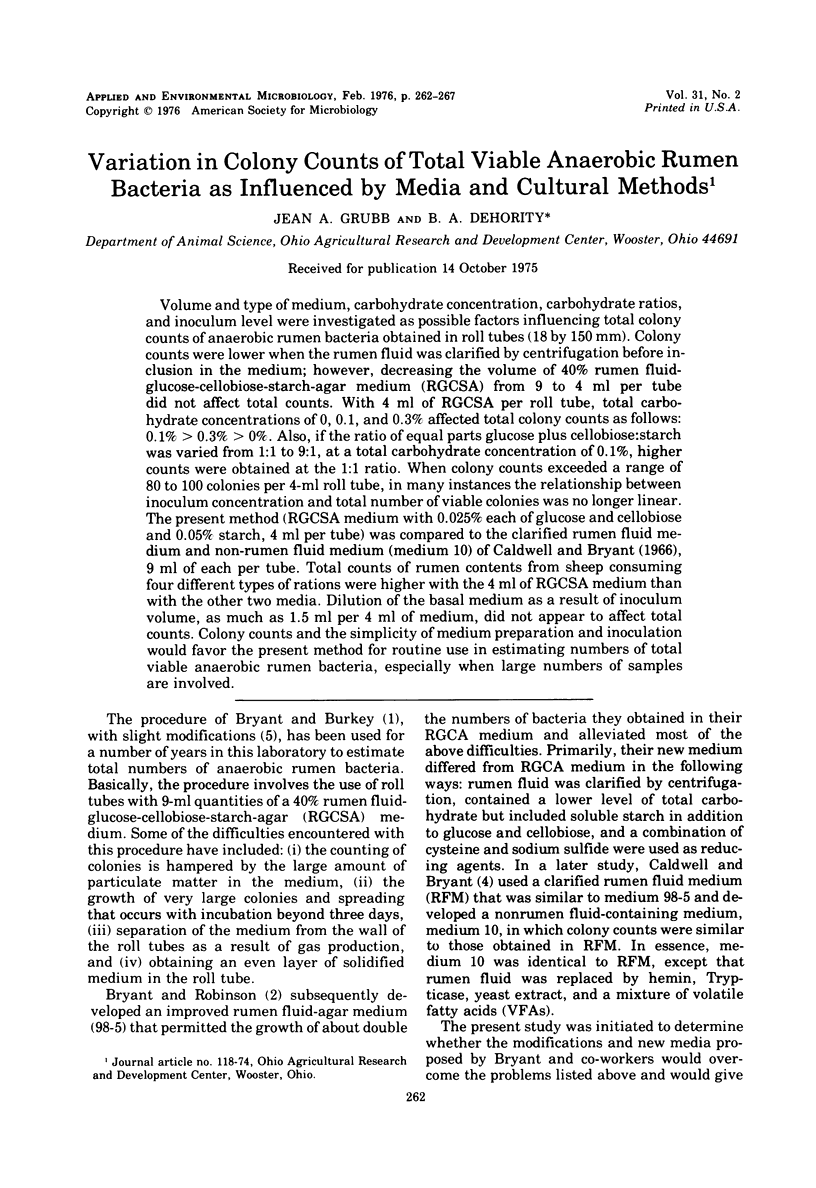
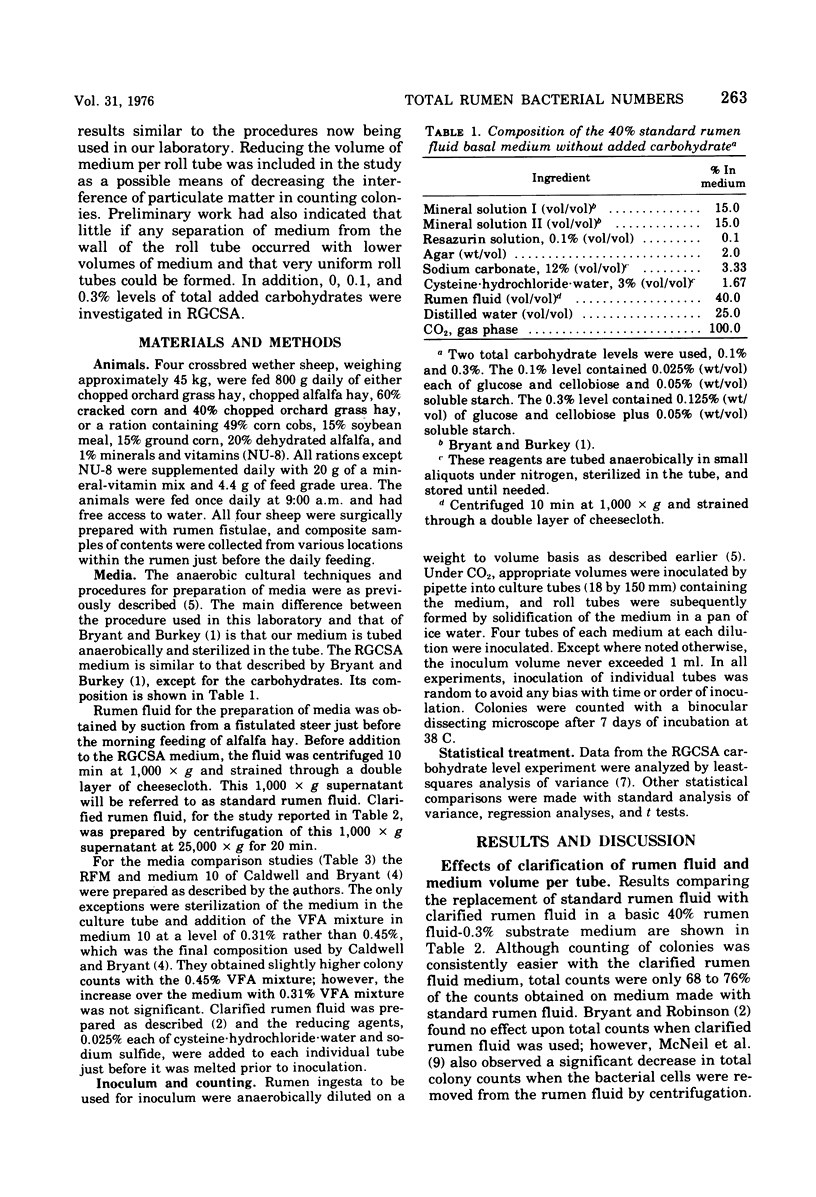
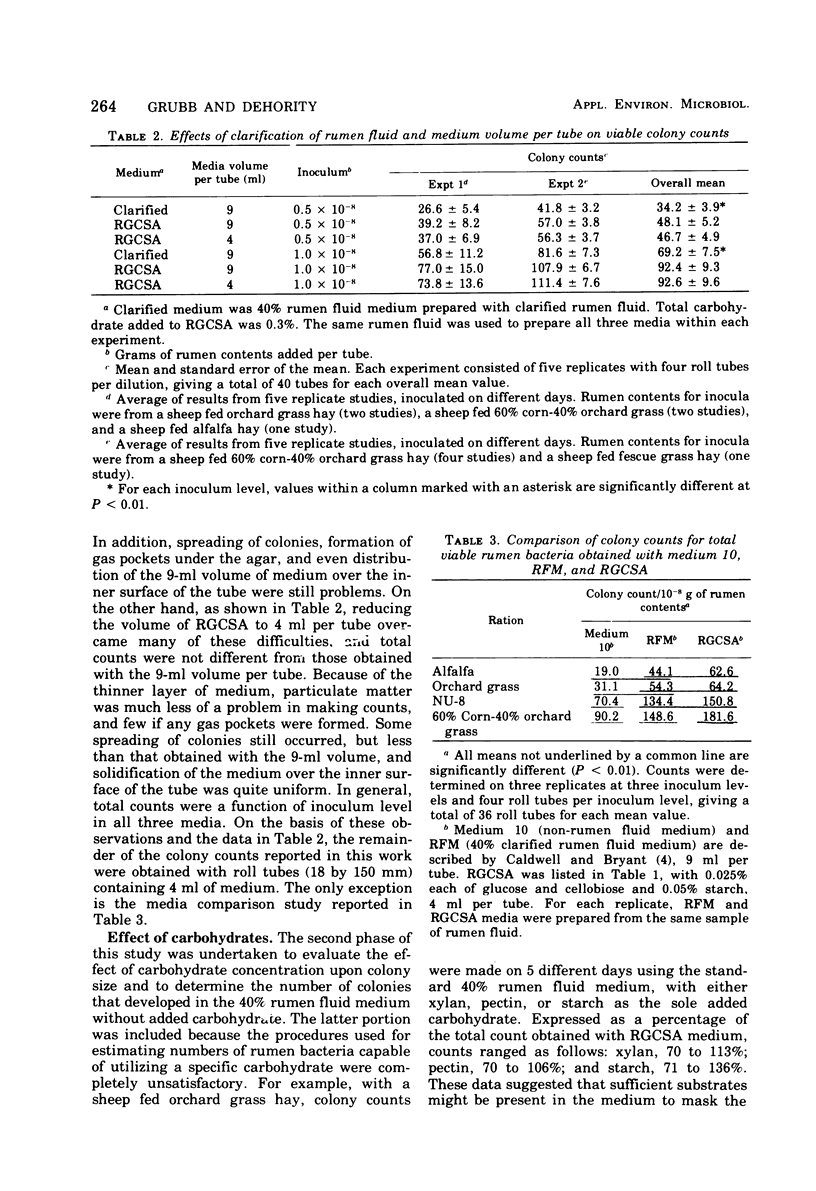
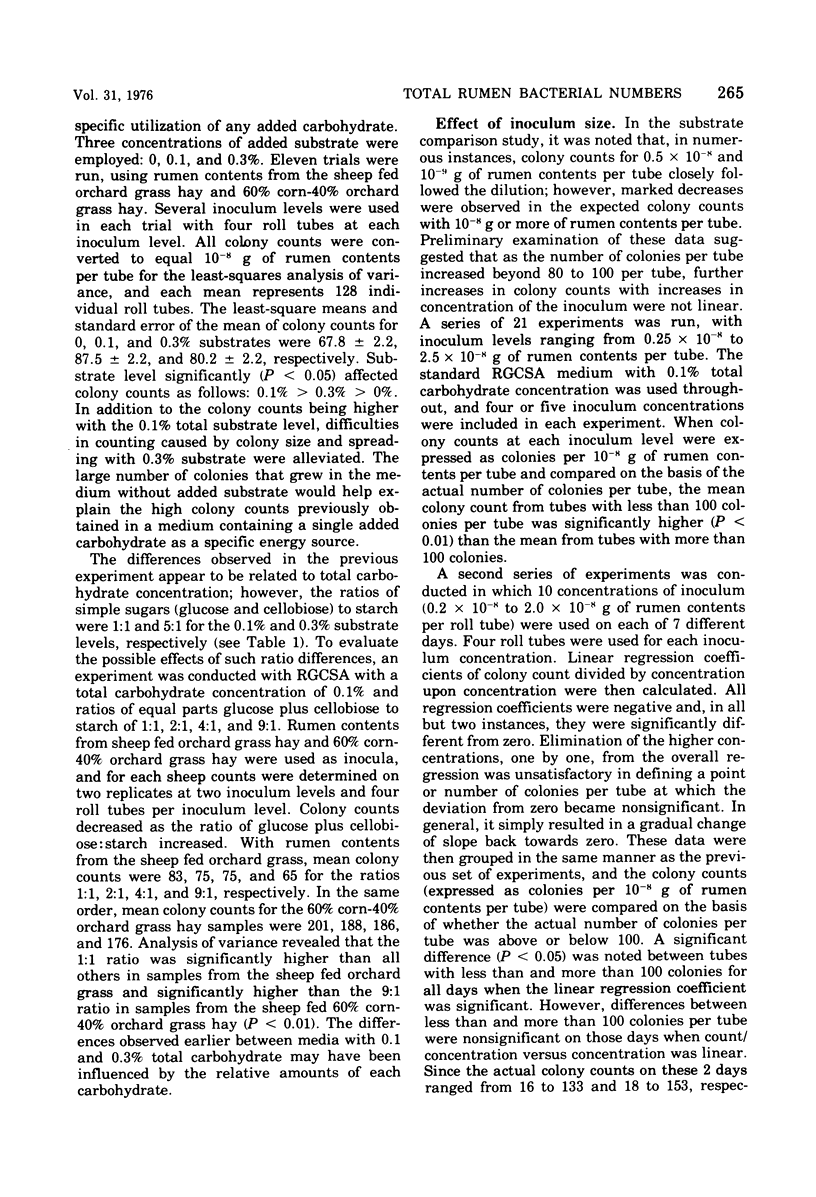
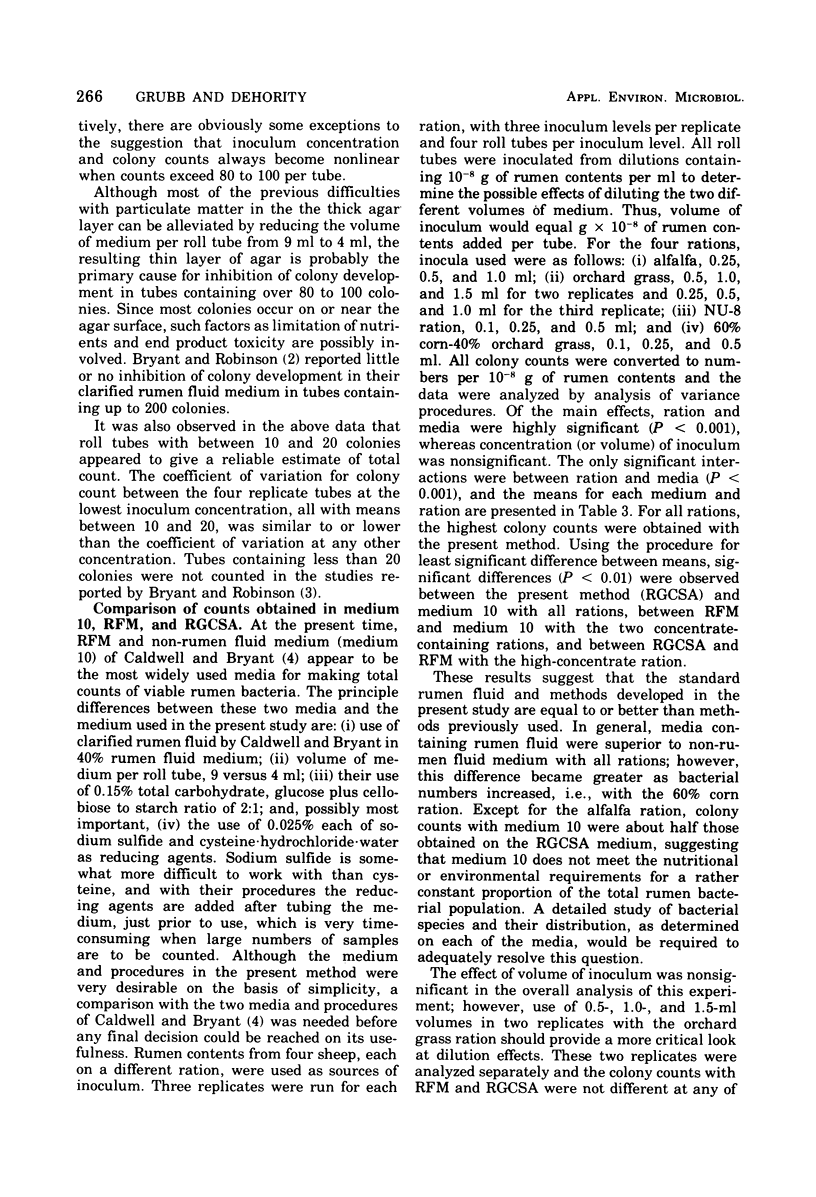
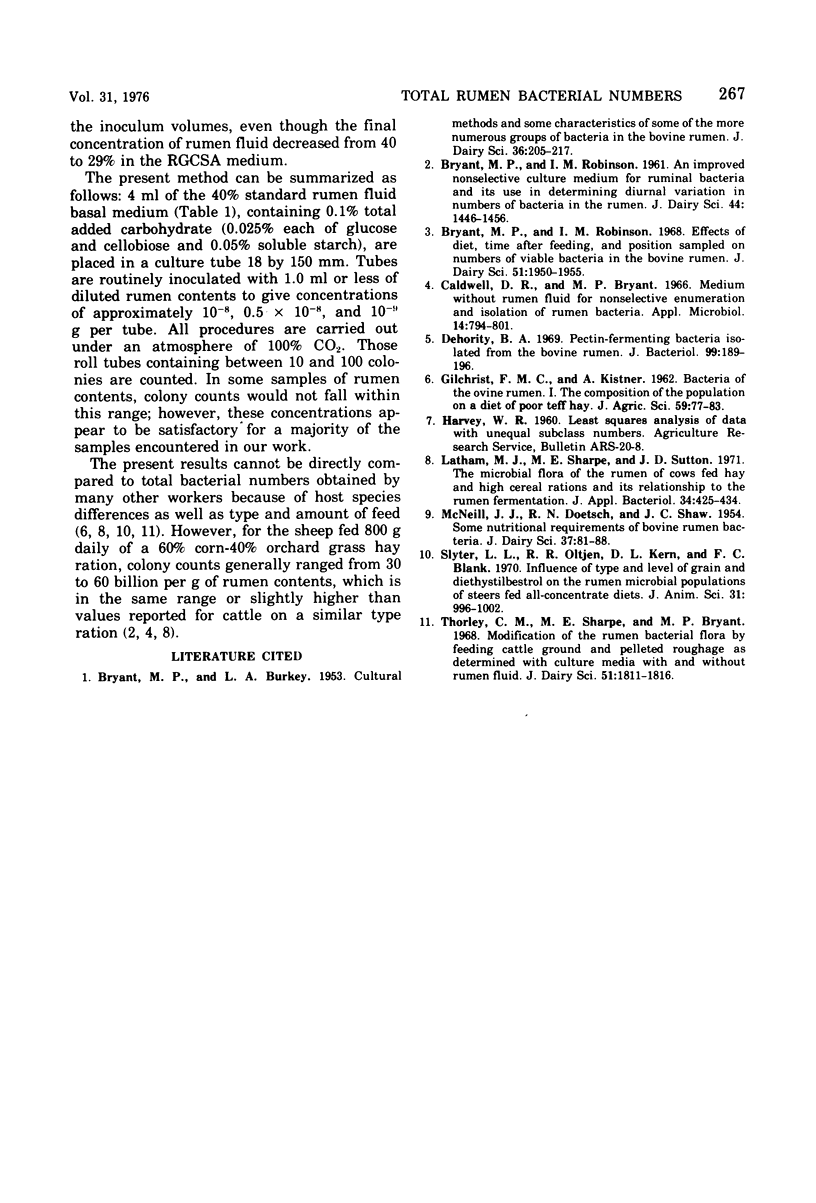
Selected References
These references are in PubMed. This may not be the complete list of references from this article.
- Bryant M. P., Robinson I. M. Effects of diet, time after feeding, and position sampled on numbers of viable bacteria in the bovine rumen. J Dairy Sci. 1968 Dec;51(12):1950–1955. doi: 10.3168/jds.S0022-0302(68)87320-5. [DOI] [PubMed] [Google Scholar]
- Caldwell D. R., Bryant M. P. Medium without rumen fluid for nonselective enumeration and isolation of rumen bacteria. Appl Microbiol. 1966 Sep;14(5):794–801. doi: 10.1128/am.14.5.794-801.1966. [DOI] [PMC free article] [PubMed] [Google Scholar]
- Dehority B. A. Pectin-fermenting bacteria isolated from the bovine rumen. J Bacteriol. 1969 Jul;99(1):189–196. doi: 10.1128/jb.99.1.189-196.1969. [DOI] [PMC free article] [PubMed] [Google Scholar]
- Latham M. J., Sharpe M. E., Sutton J. D. The microbial flora of the rumen of cows fed hay and high cereal rations and its relationship to the rumen fermentation. J Appl Bacteriol. 1971 Jun;34(2):425–434. doi: 10.1111/j.1365-2672.1971.tb02302.x. [DOI] [PubMed] [Google Scholar]
- Slyter L. L., Oltjen R. R., Kern D. L., Blank F. C. Influence of type and level of grain and diethylstilbestrol on the rumen microbial populations of steers fed all-concentrate diets. J Anim Sci. 1970 Nov;31(5):996–1002. doi: 10.2527/jas1970.315996x. [DOI] [PubMed] [Google Scholar]


